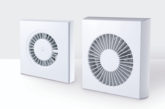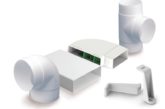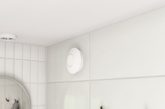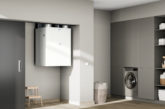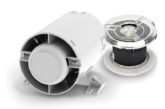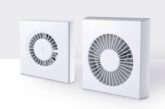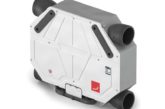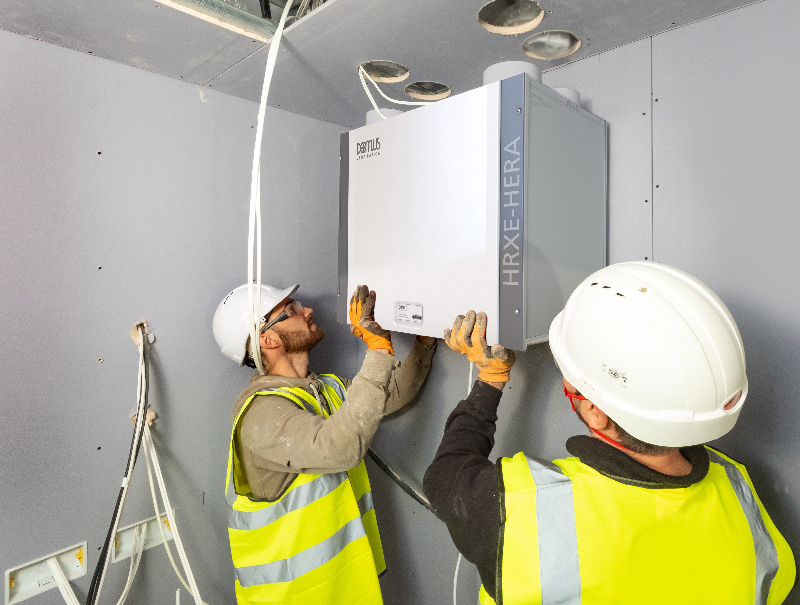
Paul Williams, Domus Ventilation Product Manager, explains how to maximise ventilation, and energy efficiency using an MVHR system.
The cost of living crises has been with us since 2021. Food and energy – particularly gas – prices have risen markedly, and it’s pretty much impossible to tell for certain if energy prices will come down, not least because wholesale energy prices are affected by global issues, such as the war in Ukraine. The one thing we can say with certainty when it comes to domestic energy prices, is that people across the UK are feeling the pinch.
Whilst short term measures can be taken by consumers to save energy at home, to have any real impact, we need to change how we build our homes in the first place, making them more thermally efficient. Changes to Building Regulations have been driving this, making homes more air tight, accompanied by more stringent ventilation requirements to avoid overheating in the summer months and to ensure better quality indoor air.
Building Regulations – Ventilation
Changes to Building Regulations ‘Approved Document F, Volume 1: Dwellings’ (ADF1) has considerably increased minimum ventilation rates across all sizes of properties, making whole house mechanical ventilation systems the most proficient option; in the case of larger properties with minimum ventilation rates up 43l/s, they really are the only option.
These are to be used in place of the more traditional ventilation methods, such as trickle vents and extractor fans, which are not able to deliver the higher air flow rates required and are also responsible for dissipating around 30% of the energy delivered to buildings the International Energy Agency calculates.
MVHR’s role
Whole house mechanical ventilation systems in the form of Mechanical Ventilation with Heat Recovery (MVHR) largely avoids this scenario by using a heat exchanger to recover the heat in stale air from wetrooms and transferring it to the incoming fresh air, which is then filtered and distributed within the home. The Domus Ventilation HRXE MVHR range uses an efficient heat exchanger which is capable of recovering up to 95% of the heat from the waste air stream.
Whilst MVHR systems aren’t a replacement for heating systems, they help reduce the heating load required from that system, reducing energy usage. The Centre for Sustainable Energy estimates heating costs can be reduced by around 25%. The cost to run an MVHR system obviously varies depending on the size of the property, building fabric, lifestyle and occupancy, and the energy tariff etc.
Maximising energy efficiency
To ensure maximum energy efficiency is gained from an MVHR system, there are certain aspects that you need to take into account.
Firstly, it’s vital to correctly size the MVHR system for the property, so that it neither under or over ventilates. The former means it won’t deliver the ventilation required under Building Regulations and will be noisy as the fan works overtime to cope. The latter will not be energy efficient.
When installing the system, be sure to use good quality ducting that has been designed to work in harmony as part of that system and has been third party tested for end-to-end system performance, as has all Domus Ventilation ducting. For maximum efficiency, I recommend MVHR systems be used with rigid ducting in larger sizes, and that all duct connections are sealed and taped. This will make for low air resistance, which is important for energy efficiency. Also on the ducting front, be sure to use ducting insulation where the ducting passes through unheated areas and voids, such as loft spaces and on the intake and the exhaust, as required under Building Regulations.
When installation is completed, commission the MVHR system accurately. Any mistakes here will result in over or under ventilating, and all the work you have done could be compromised.
MVHR systems when in operation need very little attention, but the filters do need to be replaced. We recommend they are inspected every six months and replaced annually to ensure they continue to perform efficiently. In most cases this a very simple task that can be performed by the resident via the front access panel of the MVHR unit. Be sure to explain this to the resident if you are working directly for them.
An MVHR system alone isn’t going to mean residents can switch their heating off in the depths of winter, but enabling them to shave up to a quarter off their heating bill will most certainly help now in the cost of living crises and in the future. When you combine this with the improved indoor air quality an MVHR system brings, it’s a winning combination.



